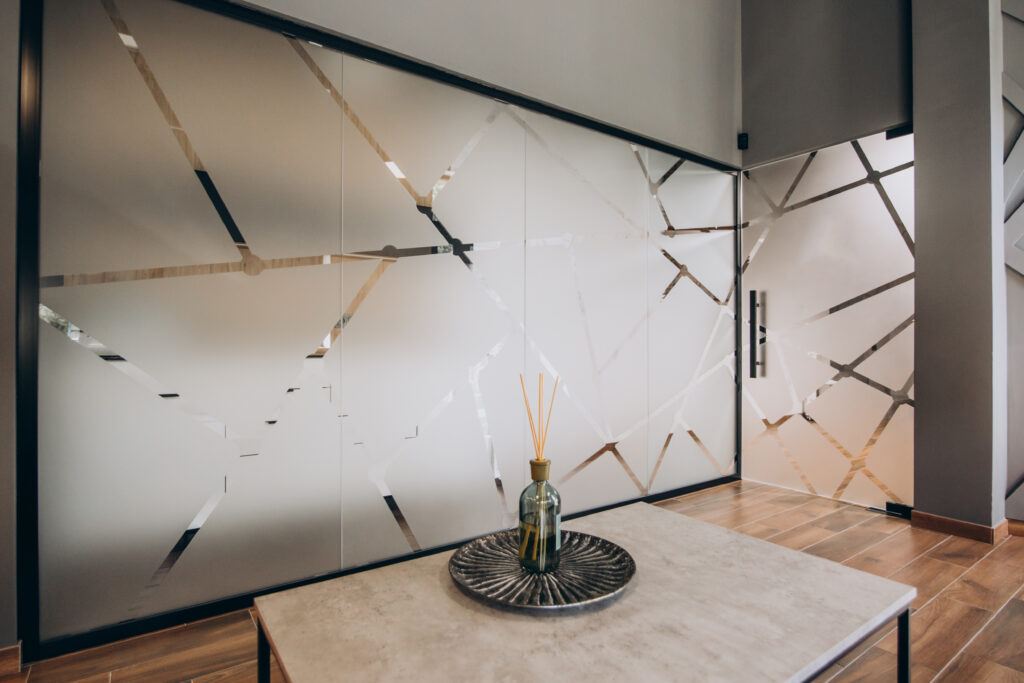In recent years, modern homes have undergone a remarkable transformation, embracing technology that enhances comfort, privacy, and energy efficiency. One innovation that has seen a significant rise in popularity is smart film Abu Dhabi. This revolutionary solution allows homeowners to control the transparency of their windows with the touch of a button, offering unparalleled convenience and style. As more residential projects incorporate this technology, smart film is quickly becoming a staple in contemporary home design.
What is Smart Film?
Smart film, often referred to as switchable glass film, is a thin layer of polymer that can be applied to existing glass surfaces. When electricity passes through it, the film changes from opaque to transparent, giving homeowners the ability to manage visibility and privacy instantly. Unlike traditional blinds or curtains, smart film provides a sleek, seamless look that does not interfere with the aesthetics of modern interiors.
The versatility of smart film extends beyond privacy control. It also enhances energy efficiency by reducing heat transfer through windows, which can significantly lower cooling costs in warmer climates. Additionally, this innovative film can filter harmful UV rays, protecting furniture, flooring, and artwork from fading over time. For residential projects that prioritize both functionality and style, smart film is becoming a go-to solution.
Benefits of Smart Film in Residential Homes
Enhanced Privacy on Demand
One of the most significant advantages of smart film is the ability to control privacy at any given moment. Traditional window treatments such as curtains or blinds require physical adjustment and can disrupt interior design. With smart film, homeowners can switch their windows from clear to frosted instantly. This feature is especially beneficial for rooms that face busy streets or neighboring properties. Whether it’s a bathroom, bedroom, or home office, smart film offers privacy without compromising natural light.
Energy Efficiency and Cost Savings
In regions with intense sunlight, like Abu Dhabi, managing indoor temperatures is crucial for comfort and energy efficiency. Smart film helps regulate the amount of sunlight entering a home, reducing the reliance on air conditioning systems. By minimizing heat gain, residents can enjoy significant energy savings. Moreover, smart film can act as an insulating layer, keeping interiors warmer during cooler months and cooler during hotter periods. This dual functionality makes it a sustainable choice for environmentally conscious homeowners.
UV Protection
Exposure to ultraviolet (UV) rays can cause damage to skin, furniture, and flooring over time. Smart film serves as an effective UV filter, blocking harmful rays while still allowing natural light to brighten the home. Unlike tinted glass, which permanently alters the appearance of windows, smart film maintains clarity when in transparent mode. This balance between light management and protection makes it an ideal solution for families who prioritize health and home preservation.
Seamless Integration with Home Automation
As smart homes gain popularity, the demand for technologies that integrate seamlessly into automated systems continues to grow. Smart film can be connected to home automation platforms, allowing users to control window transparency through smartphones, tablets, or voice commands. This integration enhances convenience and adds a futuristic touch to residential properties. Imagine being able to switch all windows in your living room to frosted mode with a single voice command – a feature that exemplifies modern luxury and innovation.
Applications of Smart Film in Residential Projects
Bathrooms and Shower Areas
Privacy in bathrooms is essential, yet traditional frosted glass or curtains can take up space and disrupt design flow. Smart film offers an elegant solution by providing instant privacy at the touch of a button. Homeowners can enjoy natural light while maintaining discretion, creating a spa-like atmosphere in their private spaces.
Living Rooms and Open Spaces
Large windows and open floor plans are hallmarks of contemporary residential design. However, maintaining privacy in these areas without obstructing natural light can be challenging. Smart film allows homeowners to enjoy expansive views during the day and privacy at night. By seamlessly blending functionality with aesthetics, it elevates the overall living experience.
Home Offices
With the rise of remote work, home offices require environments that balance focus and comfort. Smart film provides privacy for video calls and meetings without the need for cumbersome blinds. Additionally, it reduces glare on computer screens, enhancing productivity. For professionals working from home, this technology offers both convenience and style.
Bedrooms and Master Suites
In bedrooms, smart film offers homeowners complete control over light and privacy. It allows for a restful environment by blocking external light when desired, while still permitting natural daylight to filter through at other times. Its sleek, modern appearance also contributes to the overall aesthetic appeal of private spaces.
Smart Glass Film Installation: What Homeowners Should Know
Installing smart film may seem complex, but with professional smart glass film installation, it can be a straightforward process. Professional installers ensure that the film adheres perfectly to the glass surface, avoiding bubbles, creases, or misalignment. Additionally, experts handle the electrical wiring required for switchable functionality, guaranteeing that the system operates efficiently and safely.
Steps in Professional Installation
- Assessment and Measurement: Installers evaluate the glass surfaces and measure them accurately to determine the amount of film needed.
- Surface Preparation: The glass is thoroughly cleaned to remove dust, grease, and other contaminants that may affect adhesion.
- Film Application: The smart film is carefully applied to the glass, ensuring smooth, bubble-free coverage.
- Electrical Connections: Wiring is installed to enable the switchable functionality of the film. This step may involve connecting the film to a wall switch or a home automation system.
- Testing and Calibration: After installation, the system is tested to ensure the film switches between transparent and opaque modes correctly. Any necessary adjustments are made to optimize performance.
Professional installation not only ensures optimal performance but also extends the lifespan of the smart film. Attempting DIY installation without expertise may lead to imperfections that affect functionality and aesthetics.
Trends Driving the Popularity of Smart Film in Residential Projects
Modern Aesthetics
Homeowners increasingly prioritize design elements that combine elegance and functionality. Smart film offers a minimalist alternative to traditional window treatments, aligning perfectly with contemporary interior trends. Its ability to transform spaces instantly while maintaining a clean, unobstructed view contributes to its growing appeal.
Environmental Consciousness
Sustainability is a growing consideration for modern homeowners. Smart film contributes to energy efficiency by reducing cooling and heating needs, which in turn lowers carbon footprints. As environmentally conscious design becomes a priority, smart film emerges as a practical and responsible choice.
Increased Awareness and Accessibility
The awareness of smart film technology has grown, thanks to media coverage and residential showcase projects. Homeowners are now more informed about the benefits of integrating such innovations into their living spaces. Moreover, the availability of professional installation services, like smart glass film installation, has made the adoption of this technology more accessible than ever.
Technological Advancements
Continuous improvements in smart film technology have enhanced durability, transparency, and responsiveness. Modern films switch faster, offer better clarity, and are more resistant to wear and tear, making them a long-lasting investment for residential properties.
Overcoming Challenges in Smart Film Adoption
Despite its numerous advantages, smart film is still a relatively new technology in residential markets. Some homeowners may have concerns about cost, installation complexity, or long-term performance. However, these challenges are mitigated through professional consultation and high-quality products. As technology evolves and economies of scale come into play, prices are expected to become more competitive, encouraging wider adoption.
Educating homeowners about the benefits and practical applications of smart film is key. Showcasing real-life examples of residential projects that have successfully integrated the technology can inspire confidence and demonstrate its value beyond aesthetics.
Conclusion
The demand for smart film in residential projects is on the rise, driven by the desire for privacy, energy efficiency, modern aesthetics, and seamless integration with smart home systems. Homeowners are increasingly seeking solutions that offer convenience without compromising style, and smart film meets this need perfectly.
By investing in smart film Abu Dhabi and professional smart glass film installation, homeowners can transform their living spaces into innovative, comfortable, and visually appealing environments. As technology continues to advance and awareness grows, smart film is set to become an essential feature in contemporary residential design, redefining how we interact with our homes and manage light, privacy, and energy.


